Forty species raised in small hatcheries
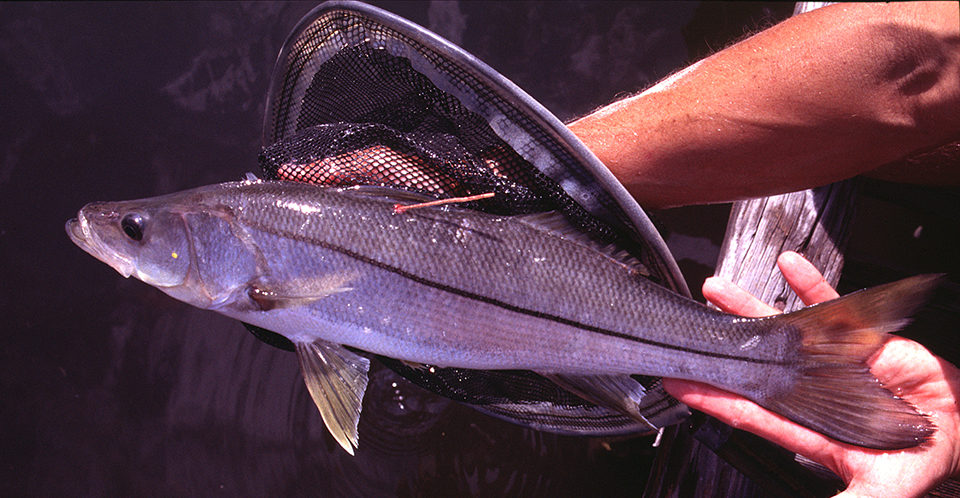
Researchers in the Harbor Branch Oceanographic Institution (HBOI) Fish Biology Department have successfully developed methods for spawning, rearing, feeding, and maintaining the health of varied marine fish on an experimental to pilot scale. Forty species and hybrids in the eel, snook, striped bass, grouper, snapper, sea bream, drum, cichlid, mullet, wrasse, and other families have been raised in small hatcheries with up to four 3,785-l tanks for larval rearing.
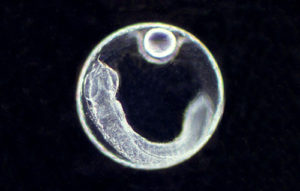
More than 33,000 juvenile and adult fish have been produced at the Fort Pierce, Florida, USA, facility, and more than 25,000 of those were released. At 39.7 percent, the best survival to juvenile stage has been achieved in sheepshead (Archosargus probatocephalus). Other encouraging survival rates include those for striped mullet (Mugil cephalus), 30.0 percent; spotted sea trout (Cynoscion nebulosus), 12.5 percent; common snook (Centropomus undecimalis), 7.0 percent; and Nassau groupers (Epinephelus striatus), 5.0 percent.
Striped mullet have been raised to an age of 8 years at HBOI. Sergeant majors have reached 10 years, Nassau groupers 14, snook 15, and sheepshead 15. To achieve such success, critical factors must be controlled in the hatchery in four major categories.
Reproduction
Ease of obtaining eggs varies among families. In work at HBOI, killifish, live-bearers, groupers, dolphins, drums, cichlids, damselfish, and triggerfish have spawned voluntarily. Hormone treatment followed by stripping was used for herrings, snook, groupers, sea bream, drums, and mullet. Running ripe wild anchovies, snook, groupers, snappers, sea bream, and wrasses were strip-spawned. Eggs of wild anchovies, damselfish, mullet, wrasses, spadefish, and flounders, and larvae of wild eels and snook were collected.
Engineering
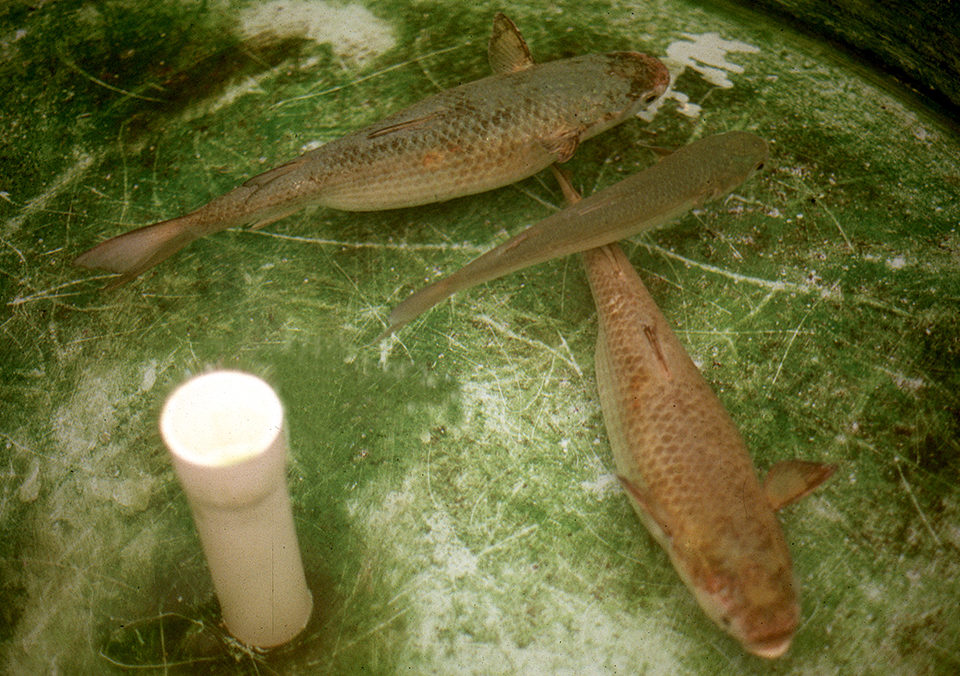
Most marine teleost fish have egg diameters in the 0.3 to 15 mm range and hatchling lengths of 0.7 to 45 mm. Nearly all actual and potential mariculture species have egg diameters of 0.6 to 3.4 mm and hatchling lengths of 1.3 to 9 mm. Tolerance of turbulence and toxicants varies among species, with smaller larvae tending to be more sensitive.
Demersal larvae – those that live on or near the bottom – usually are more capable than planktonic larvae, and inshore larvae are more capable than offshore larvae. Small larvae that normally live in deep water tend to survive better in larger tanks, probably because they are not well adapted to coping with barriers like tank walls.
Hatchery systems need to maintain the highest water quality possible while keeping larvae and their food optimally dispersed. They must allow gentle adjustment of water level, water exchange, circulation, aeration, light, etc. as the larvae grow.
Nutrition
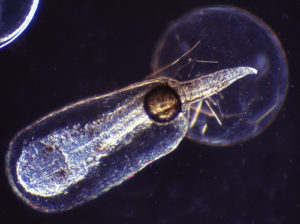
Larvae of marine fish have similar nutritional requirements, with smaller larvae tending to need smaller prey with higher nutritional density for the first few days, and live food for a longer period than larger larvae. For most early to midstage marine fish larvae, copepods are the most natural and nutritionally reliable food. They usually contain large amounts of essential fatty acids.
The HBOI Fish Biology Department prefers to feed cultured copepods through most of the hatchery phase, along with rotifers and brine shrimp. Unenriched rotifers raised on high-quality algae are used first, with the feeding of enriched rotifers delayed until the larvae can tolerate the resulting decrease in water quality. Unenriched brine shrimp nauplii are used one or two days. Thereafter most of the brine shrimp are enriched meta-nauplii.
The cost of feed usually is the greatest variable cost during grow-out. Fish-meal prices have increased, and excessive use of fishmeal is environmentally irresponsible. Five years ago, HBOI eliminated fishmeal from its grower feeds (now successfully used for snook, groupers, sea trout, and mullet) and reduced it to 10 to 20 percent in starter feeds. Future starter feeds will contain 0 to 10 percent fishmeal. For common snook over the range of 70 to 700 grams, 0.9 to 1.0 percent per day growth and 0.9 to 1.1 feed-conversion ratios with no fishmeal were similar to or better than those for fish fed 10 to 60 percent fishmeal.
Health

Optimization of health management methods that lead to stable, predictable survival and growth will be an important step toward the sustained farming of marine fish in the United States and other regions. Especially when combined with good sanitation, probiotic bacteria can help reduce and possibly eliminate the need for drug treatment of fish in tank systems. They can help fish internally by stabilizing the gut microflora, excluding pathogens, improving digestion, and providing beneficial enzymes, vitamins, other growth promoters. Probiotic bacteria also improve and stabilize the bacterial ecology of the rearing systems.
Beginning in 1995, the HBOI Fish Biology Department conducted a comprehensive investigation of the microflora in all hatchery water and culture systems, reared live foods and fish, and wild copepods and fish. Bacteria are found on the skin and in the gut, but not the muscle or other organs, of healthy fish.
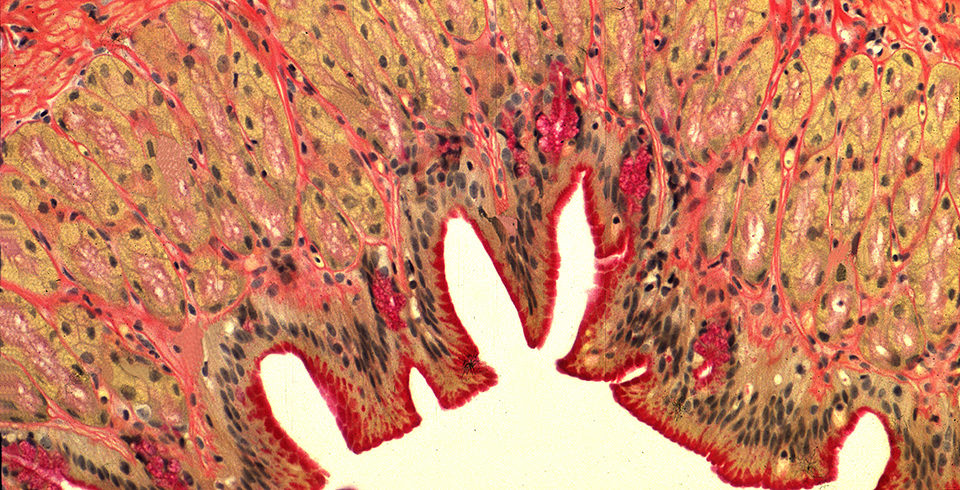
Several strains of probiotic bacteria isolated from healthy hatchery-reared Atlantic, Pacific, and freshwater fish have been kept in culture. These naturally occur in the environment and healthy wild fish. Use of one strain increased the survival of snook from hatching to 50-day-old juveniles from the less than 2 percent previously reported to 7 percent, and also improved growth and size uniformity. Those three factors also were enhanced for spotted seatrout and striped mullet. It is expected that effective control of cannibalism in snook will increase hatchery survival to at least 10-15 percent.
Snook, seatrout, and mullet reared with progressive hatchery methods have not needed drugs and are not likely to. They are resistant to diseases and stress, and have adapted very well to wild conditions. In field studies during the last two years, HBOI staff found 19 types of bacteria in wild snook, including the same seven types that occurred in hatchery snook. The hatchery snook bacteria all were normal types and none were harmful.
Tagged snook that were released have been tracked for more than a year, with some caught while feeding with schools of wild snook. In one small study in progress, four of 14 snook with ultrasonic tags were located in schools of wild snook 4.5 to 12 km away from release sites up to six months after release. Stocked Nassau groupers were tracked up to 16 months after release.
Bacteria selected from a specific environment have a far greater capacity to produce appropriate antipathogen and prohost substances and compete for ecological prevalence in that environment than bacteria from a different source. Most probiotic bacteria currently used in aquaculture were taken from terrestrial sources for use with land animals. Bacteria derived from warm-water marine fish are more appropriate and effective for those fish than terrestrial bacteria.
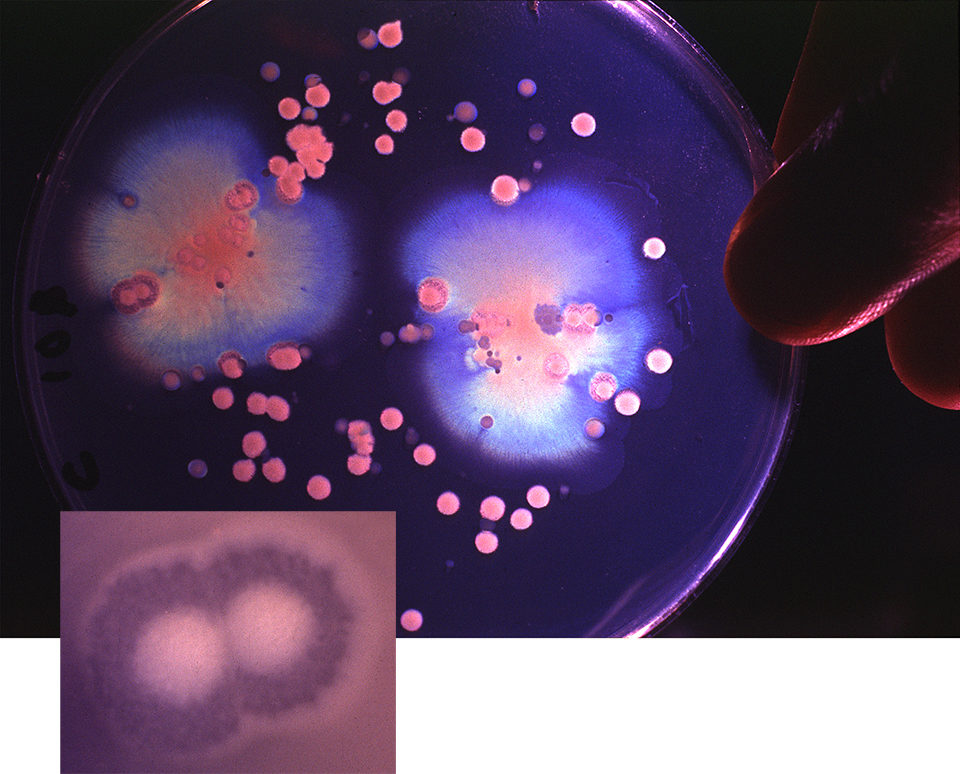
Conclusion
Good-quality eggs of many marine fish are easy to obtain with standard conditioning and/or hormone treatment. Despite similar basic requirements, fish larvae in nature and culture have a wide range of robustness and survival ability. What seems trivial or invisible to a human might be massive and overwhelming to the little fish, so most need to be treated gently at first.
Live food methods are relatively standardized, with variable emphasis and scheduling of prey depending on fish species and facility preferences. Acceptable feed formulas are available for most fish categories. Most or all fishmeal can be eliminated, even for strict carnivores. In well-managed tank systems, it should be possible to maintain excellent fish health without the use of drugs.
(Editor’s Note: This article was originally published in the February 2004 print edition of the Global Aquaculture Advocate.)
Now that you've finished reading the article ...
… we hope you’ll consider supporting our mission to document the evolution of the global aquaculture industry and share our vast network of contributors’ expansive knowledge every week.
By becoming a Global Seafood Alliance member, you’re ensuring that all of the pre-competitive work we do through member benefits, resources and events can continue. Individual membership costs just $50 a year. GSA individual and corporate members receive complimentary access to a series of GOAL virtual events beginning in April. Join now.
Not a GSA member? Join us.
Authors
-
John W. Tucker, Jr., Ph.D.
Head, Fish Biology Department
Harbor Branch Oceanographic Institution
5600 North U.S. One
Fort Pierce, Florida 34946 USA -
Sarah Blain Kennedy, DVM
President and Chief Veterinarian
Animal Wellness Center
Vero Beach, Florida, USA
Tagged With
Related Posts

Innovation & Investment
Aquaculture is winning, Rabobank analyst explains
Aquaculture is the “winning protein,” according to a new Rabobank report that its author, Gorjan Nikolik, said is intended to draw the bank’s agro-industry clients to opportunities in the fish farming business.

Health & Welfare
Enteritis induction by soybean meal in totoaba diets
This study investigated the effects of increasing levels of dietary soybean meal (SBM) with constant taurine supply in the induction of enteritis in juvenile totoaba.

Intelligence
Intensive fish farming in Italy
Intensive production equipment and management techniques allow the Nuova Azzurro Fish Farm in Italy to raise about 50 metric tons of sea bass per raceway per year.

Responsibility
Integrated marine aquaculture-agriculture: Sea farming out of the sea
Aquaponic systems are robust, management is not difficult, and the synergies between fish and plants make vegetable production more profitable than aquaculture alone. The lion’s share of marine agriculture involves salt-tolerant halophytic plants used as food or feed, or in energy production.


